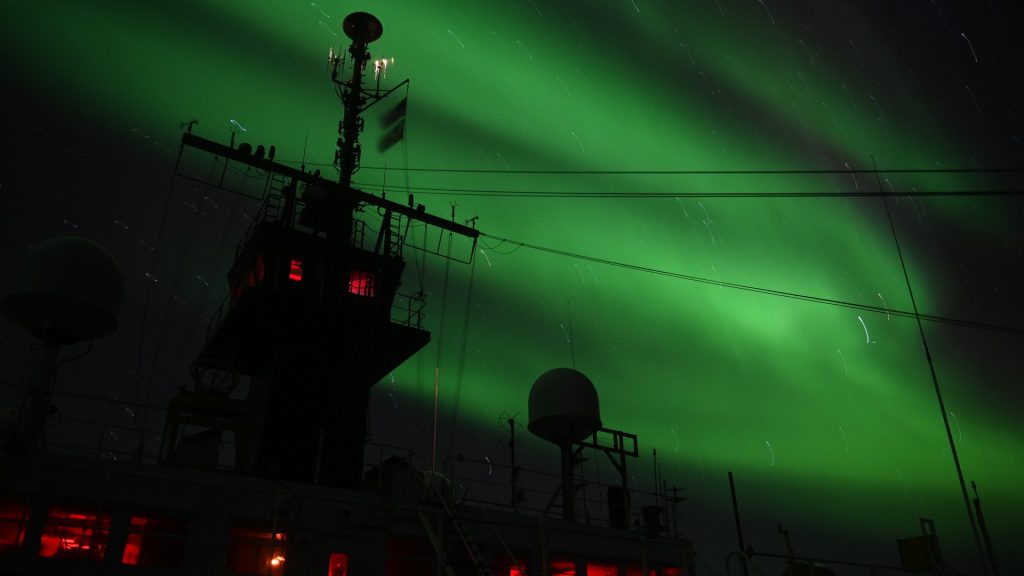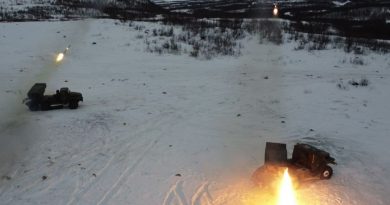U.S. Department of Defense stresses need for more icebreakers in the Arctic.

As the ice melts and new opportunities emerge in the Arctic, the U.S. Department of Defense (DOD) is advocating the need for more icebreakers in the region.
“It’s true that ice is melting in the Arctic, but this doesn’t mean the U.S. no longer needs icebreaker ships to operate in the region”, writes C. Todd Lopez, a DOD employee, in a press release. “And right now, the U.S. needs more than what it currently has.”
In the United States, icebreakers are not operated by the Navy, but by the Coast Guard, which currently only has two operational vessels.
Six new polar icebreakers capable of operating in the Arctic are currently authorized to reinforce the Coast Guard’s icebreaking fleet. They would be essential to the Coast Guard in addition to the two icebreakers already active.
An essential tool in the changing Arctic
As the Arctic warms more than twice as fast as the rest of the planet, its ice cap is melting faster and creating new trade routes for shipping.
Countries like Russia and China are already aware of these opportunities. China for example is developing a ‘Polar Silk Road’ through developing the Arctic shipping routes.
On the other hand, Russia’s involvement in the region is a source of concern for the DOD. Randy Kee, who serves as the senior advisor for arctic security affairs with the Ted Stevens Center for Arctic Security Studies, addressed concerns about the Russian Federation’s own “vast number of icebreakers.”
He said that while the Russians do use some of those icebreakers to maintain a sovereign presence in the Arctic, others are necessary for running logistics operations in the region, where Russian communities dot the coast of the Arctic Ocean.
Russia intends to begin year-round transit shipments on the Northern Sea Route as early as 2024, but this winter’s experiences show that the capricious sea ice could derail plans. The federation is also strongly developing its mining operations in the region.

The Arctic is rich in resources such as commercial fishing, mineral extraction and oil. According to some estimates, there are as many as 90 billion barrels of untapped oil in the region.
“Strategically, icebreakers provide persistent presence in a way that’s not met by anything else in the maritime region,” Randy Kee said. “Remember, the Arctic is a maritime region, and icebreaking provides you year-round access to be able to go in the region.”
The Department of Defense adds that if the U.S. were to enter the region, it would require all nations operating in the Arctic to follow internationally established rules. However, it recognizes the importance of being able to operate year-round to do so.
“You need icebreaking to be able to project year-round presence and when it’s [of] your time and choosing,” Kee said during a virtual panel discussion today with the Atlantic Council.
The United States is not alone in developing its icebreaking fleet. Canada is planning to build two new heavy icebreakers, Russia is contracting Finland to build a new ship and China is already building its third icebreaker.
Related stories from around the North:
Canada: Canadian icebreaker project estimated at $7.25 billion, Eye on the Arctic
Denmark/Greenland: New guideline launched for Arctic-specific risk assessment in shipping, Eye on the Arctic
Finland: Finland’s aging icebreaker fleet needs modernization, Yle News
Iceland: Int’l Arctic emergency marine exercise will lead to better response coordination, say participants, Eye on the Arctic
Norway: The Viking Sky incident – A wake-up call for the Arctic cruise industry?, Eye on the Arctic
Russia: Finnish shipbuilders contract powerful icebreaker for Russian Arctic, The Independent Barents Observer
United States: ‘Uber for icebreakers’ idea gains traction in U.S. Senate, Alaska Public Media



